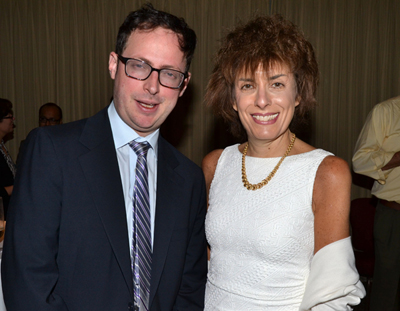JSM 2013—A Postscript
As I write this, it has been about two weeks since the 2013 Joint Statistical Meetings concluded in the beautiful city of Montréal. JSM as we know it today was established formally in 1974, after decades of combined meetings involving several statistical societies, and they are the ASA’s annual meeting. For many ASA members, attending JSM is a tradition—a chance to not only hear about and share the latest advances in our field, but also to catch up with friends (and to make new ones).
Concerns that financial constraints faced by many U.S. employers might curtail attendance and travel to Canada might pose difficulties for some members were happily unfounded. The final tally shows JSM 2013 virtually tied with the 2006 meetings in Seattle for third place in total number of participants—a tad more than 6,030—behind only San Diego in 2012 (6,344) and all-time record holder Washington, DC, in 2009 (6,804). Montréal didn’t only greatly exceed attendance projections. As many of you communicated to ASA staff members and me, the event—sessions, conference venue, and location—also surpassed expectations and left participants energized and excited about our field.
For an ASA president, knowing that JSM in his/her presidential year was so well attended and successful is gratifying. As my predecessors will attest, the meetings are the milestone event in a president’s term, demanding one’s continuing focus starting almost two years in advance.
Mere months after being elected, the future president appoints the JSM program chair based on recommendations from the ASA Committee on Meetings. I congratulate and thank JSM 2013 Program Chair Bhramar Mukherjee and her program committee for superb stewardship of this year’s program.
The future president also selects the theme for the meetings—that 2013 is the International Year of Statistics made my choice straightforward.
The two most challenging tasks a president faces are securing the ASA president’s invited speaker and preparing his/her own presidential address. As for the first of these, it is the sole responsibility of the president to identify, invite, and communicate with the speaker. And this must be done far in advance, as the date is immutable, and noteworthy individuals are generally booked months or years ahead.
The increasing excitement—in the media and among statisticians alike—in the months leading up to the 2012 U.S. presidential election over the forecasts by Nate Silver on his FiveThirtyEight blog and his best-selling book solidified my objective. I wanted Nate Silver. Having someone of his “rock star” stature, who has focused so much popular attention on the power of statistics, speak at JSM would be, frankly, as my students would say, “awesome.”
Figuring it would be pointless to contact him while he was consumed with the election, I approached him shortly after. I had some help reaching him, for which I am extremely grateful. And, fortuitously, the ASA received an invitation to an event in Washington, DC, in December 2012 at which Nate spoke, which gave me the opportunity to meet him and confirm his willingness in person.
For the record, Nate received the same compensation that all ASA president’s invited speakers do—airfare and lodging. Historically, the ASA does not provide an honorarium to the president’s invited speaker. I am indebted to Nate for his willingness to speak to us without one, knowing that he easily commands handsome speaker fees commensurate with his fame.
Nate’s well-summarized address generated considerable commentary and attracted more than 4,000 JSM attendees, forcing us to rethink the traditional Q&A session. ASA Executive Director Ron Wasserstein had a brilliant idea—audience members would submit questions during and after the address via Twitter, which Ron would receive onstage on an iPad. If you were there, you know why I say Ron has a second career as a talk show host in his future—his adeptness at fielding, consolidating, and asking the questions was inspiring. As were Nate’s address and his answers.
If there was a defining moment, it was Nate’s response to a question regarding data science versus statistics: “Data scientist is just a ‘sexed up’ term for statistician,” followed by “call yourself what you want, just do good work.” The audience erupted in enthusiastic applause.
This question has figured prominently throughout my time as ASA president-elect and president, during which interest in statistics has skyrocketed in the media while, simultaneously, the ongoing discourse on data science and Big Data has included scant references to statistics or statisticians. This contradiction, taking place during the International Year of Statistics no less, provided inspiration for my second major JSM responsibility—my own president’s address. Any former president will tell you that deciding on the message, crafting the prose, and perfecting the delivery are all-consuming activities during the months leading up to the meetings.
My message was that this contradiction places our discipline at a critical juncture. On the one hand, we have much to celebrate. Increasing recognition of the importance of statistical thinking among the media and public stands to affect the quality of decisionmaking and inspire interest in our field among students necessary to meet future demand for our skills. At the same time, we have much to do. Statistical science is an indispensable facet of the field called data science, and we need to be identified with this field and engaged. The ASA—and all of us—must play a role in promoting statistics at multiple levels and establishing our essential place as part of the data science team.
The numerous comments by many of you on the address and my June and July columns have been diverse and thought provoking. Some of you expressed appreciation for “a needed kick in the pants” and for a “measured discussion of the data science challenge.” Others asserted that “statistics” is synonymous with “data science” and that we should lay aggressive claim to the term and call ourselves such. There were suggestions that we rebrand our discipline as “statistical science” and distinguish our unique contributions.
Many of you agreed that lack of facility with programming, machine learning, and distributed computing and data management on the part of many statisticians contributes to the disconnect with the broader data science community. And that we must consider revisions to current statistical training. Some took me to task for not emphasizing sufficiently the importance of R to data science, while others insisted my mention of R proficiency as a requisite skill is misguided.
A few of you noted that “the song remains the same,” albeit in a new context. One eloquent email expressed dismay that, as a profession, “we continue to struggle for appropriate recognition,” opining that we need to examine why we continue to feel our “existence is constantly under threat.” Some noted relevant articles in The American Statistician (Desired and Feared—What Do We Do Now and Over the Next 50 Years?, What Is Statistics?, and Desired and Feared—Quo vadis or Quid agis?) and that lack of visibility is a recurrent theme of presidential addresses dating back decades.
I was pointed to an interesting report that acknowledges the confusion over the definition of “data scientist” and identifies various data science subgroups and skills associated with each. The authors advocate for “T-shaped” data scientists who can work effectively in interdisciplinary teams and who have “substantial, deep expertise” in at least one key aspect—for example, statistics.
I am grateful that so many of you have shared your views about statistics, data science, and the future of our field. The perspectives may be diverse, but all will inform the way forward for our association and profession. Please continue to do so.
The success of JSM depends ultimately on your involvement—as organizers, presenters, session chairs, and exhibitors. Thank you for your outstanding contributions and to our superb ASA meetings staff for coordinating the event. And congratulations to our new Fellows and award recipients, whose accomplishments I was honored to recognize at the two JSM award ceremonies. I hope this JSM was as memorable an experience for you as it was for me.



















